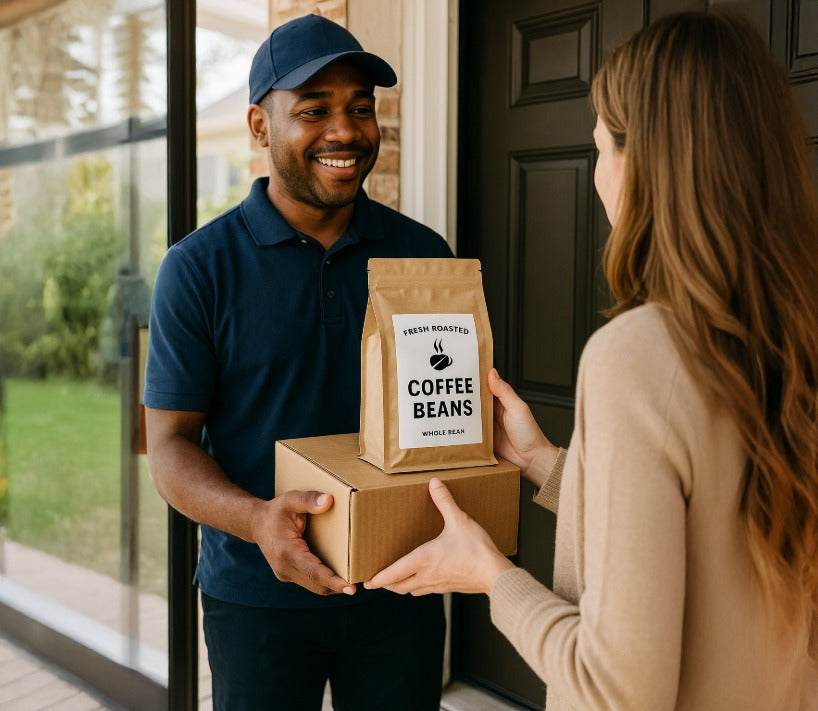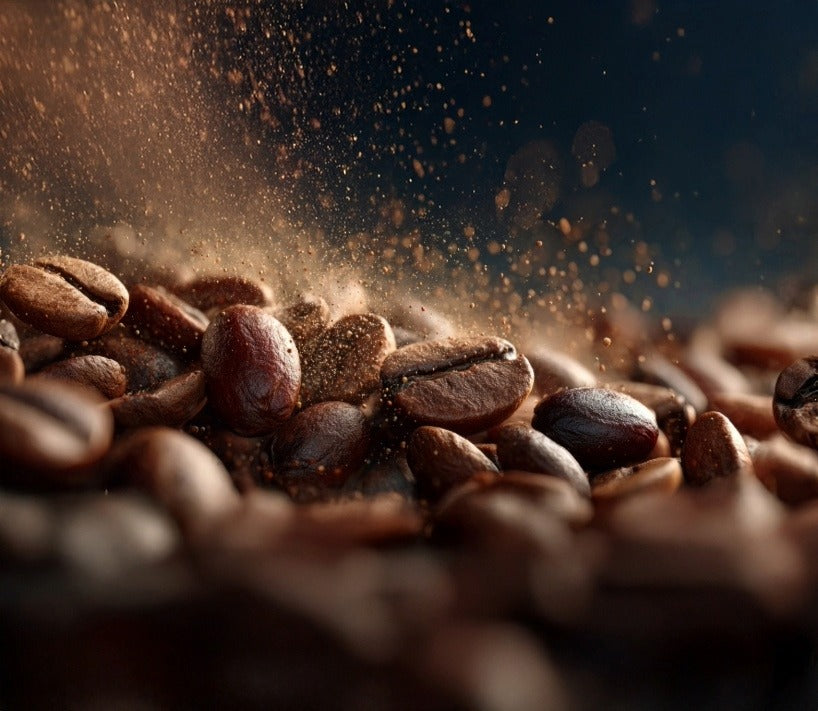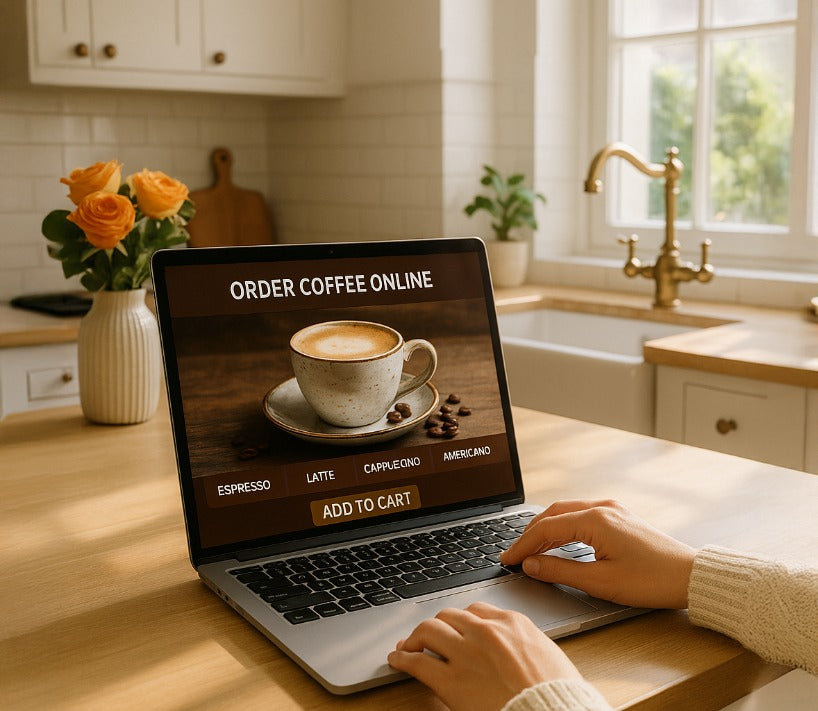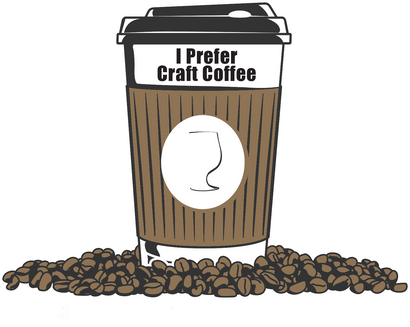Sticker Shock or Flavor Jackpot? Why “Expensive” High-Scoring Specialty Coffee Is Actually a Bargain
May 22, 2025 5 min read
Sticker Shock or Flavor Jackpot? Why “Expensive” High-Scoring Specialty Coffee Is Actually a Bargain
“Wait… $27 for 12 ounces? Are You Kidding Me?”
Ever scrolled through a site promising the best coffee to buy online, spotted a tiny bag with a price that rivals a decent bottle of wine, and thought, “There’s no way beans should cost that much—unless they also fold my laundry?” Yeah, me too—until I dug deep into what that price tag really covers and who actually benefits. Spoiler: it’s not just the fancy roaster with the ironic mustache.
Let’s Peek Behind the Price Curtain
1. A Tiny Slice of the Coffee Pie
Globally, about 60 billion pounds of coffee are produced each year, but only 3–5 percent scores 80+ points on the Specialty Coffee Association (SCA) scale. That high-scoring sliver is like the top shelf of the top shelf—the best small batch coffee on the planet. Fewer bags mean higher demand, which nudges price northward. Scarcity 101.
2. Farmers Who Hand-Pick Like Jewelers
Remember the last time you sorted M&Ms by color? (Just me?) Now imagine doing it with cherry-sized coffee fruit—all day, on a mountainside. Farmers who grow specialty coffee pick only the ripest cherries, often three to four passes per tree. That laser-focused labor pushes up farmgate cost but ensures you get the best tasting whole bean coffee later.
3. Processing with Spa Treatment Standards
Instead of dumping cherries into massive fermentation tanks, many specialty producers use tiny tiled vats, controlled drying beds, and constant moisture checks. Think day-spa for beans: exfoliation, hydration, and a sunbathing schedule. That extra care keeps defects low and flavors high, making the coffee good to drink black—but yes, it raises costs.
4. Q-Graders: Coffee’s Sommeliers
Every high-scoring lot is evaluated by licensed Q-graders—people trained to detect differences of one acidity point the way some folks sniff out pizza from three blocks away. Their expertise ensures accuracy in the score but also adds another paid step. (And no, they don’t work for tips in latte art.)
5. Micro-Importers & Transparent Shipping
Commodity beans move in giant 60 kg jute bags. Specialty coffees often travel in grain-pro storage liners, vacuum-sealed bricks, or refrigerated containers. Better logistics protect delicate flavor compounds, especially for coffees destined to become best espresso beans—but “cold-chain” shipping isn’t cheap.
6. Roasters Who Roast-to-Order (Not Roast-to-Warehouse)
When you buy specialty coffee online from a quality roaster, they’re likely roasting it days—or even hours—before shipping. Same-day or next-day dispatch is common for top coffee delivered services. That freshness guarantee forces roasters to keep tiny inventories, roast more frequently, and pay higher per-batch operating costs.
7. Direct Trade & Living Incomes
The commodity market pays farmers cents on the pound. Specialty importers often negotiate directly, adding premiums for quality and environmental stewardship. Those premiums translate to school fees, healthcare, and reinvestment on the farm. In other words, your “expensive” cup funds actual human lives, not just marketing banners for the best craft coffee online.
Mini Cost Breakdown: “But It’s Still $27!”
Stage Approx. Cost per 12 oz Bag What You’re Funding Farm Labor & Processing $7.00 Careful picking, selective fermentation Export/Import Logistics $3.50 Refrigerated containers, climate-proof bags Quality Grading & Financing $1.50 Q-grader fees, micro-lot financing Roasting (Small Batch) $3.00 Energy, skilled roaster salary, QC cuppings Packaging & Sustainability $2.50 Biodegradable bags, one-way valves Same-Day Fulfillment $2.50 Labor, postage, branded boxes Roaster Margin $7.00 Fair profit to keep lights on Your Total: $27.00 (Or roughly $2.25 per 10-oz mug—cheaper than chain coffee mystery brew, minus the regrets.)
8. Flavor: The Real Return on Investment
When you invest in the best craft coffee at home, you get:
-
Complexity – berry jam in the aroma, nougat in the finish.
-
Clean cup – no ashtray bitterness.
-
Sweetness – natural sugars you never need to “mask” with syrup.
Suddenly, that $27 bag—brewed into 20 cups—feels more like a bargain tasting flight than a splurge.
9. Environmental Stewardship & Traceability
High-scoring lots usually come with GPS-accurate farm info, shade-tree counts, and carbon audits. Your purchase supports farmers who conserve water, maintain biodiversity, and reduce chemical inputs. Try getting that from dollar-store blends.
10. Community Impact—Beyond the Cliché
Specialty co-ops finance women-led collectives, build cupping labs in origin, and host agronomy workshops. Paying a premium means you—and I—aren’t just coffee tourists; we’re active participants in positive change.
How This Knowledge Saves You Money (and Guilt)
-
Sharper Buying Decisions
Armed with price intel, you can compare offers objectively. That flashy “$12 specialty bag” on a big-box site might hide lower farm pay or stale harvest years. Transparency is priceless. -
Fresher Cups, Fewer Wasted Beans
When you pay for best small batch coffee, you’re incentivized to store, grind, and brew properly. Goodbye half-empty, flavorless bags in the pantry. Long-term, you actually waste less money. -
Thoughtful Gifting
Need a gift for coffee lover relatives? A story-rich bag with farmer photos beats yet another novelty mug. Bonus: you look like the friend who actually researches gifts, not the one panic-buying socks. -
Personal Flavor Discovery
Because these coffees are distinctive, you’ll refine your palate and figure out what you truly love—whether it’s a floral Ethiopia for pour-overs or the best espresso beans from a syrupy natural Brazil. Then you can reliably seek out those profiles, rather than roulette-wheel shopping. -
Supporting Living Wages
Every brewed cup becomes a tiny vote for fair compensation, climate resilience, and better working conditions. You’d tip your barista, right? Same logic—just at farm level.
FAQ – Rapid-Fire Myths I Hear Every Week
Q: Can’t I find “specialty coffee” cheaper at the grocery store?
A: You’ll find the label, sure, but without crop year and exact score, it’s often yesterday’s “specialty” downgraded by age. And supermarkets rarely reveal roast dates.
Q: I’m a dark-roast junkie. Is expensive light-roast worth it?
A: Even if you prefer smoky flavors, high-scoring lots offer sweeter dark roasts without burnt bitterness. Plus you’ll probably use less sugar—health win!
Q: Is there a way to taste before committing?
A: Many roasters sell 4-oz sample boxes or host virtual cuppings. Great way to discover the best specialty coffee online for your palate.
Q: Are espresso blends inherently cheaper?
A: Not necessarily. The best espresso blends may contain multiple high-scoring components precisely balanced. Complexity = cost.
Your 3-Step Action Plan (No Purchase Links, Promise)
-
Compare Farmgate Prices
Good roasters now publish that they're supporting small independent farms. More cents at origin = better for producers. -
Check Harvest Year & Roast Date
Aim for green coffee harvested within the last 12 months and roasted within the last 14 days. Stale is a luxury you don’t need. -
Do the Cup-Per-Dollar Math
Divide the bag price by expected cups. Suddenly, that “expensive” bag costs less per serving than a chain-store latte that tastes like cardboard.
Final Sip – It’s Not Expensive, It’s Valuable
So, why is high-scoring specialty coffee “so expensive”? Short answer: it isn’t—once you understand the craft, care, and communities hidden in every bean. You’re not just funding caffeine for your bloodstream; you’re underwriting living wages, environmental safeguards, and flavor experiences that instant coffee can only dream of.
Next time a friend gasps at your stash of best coffee to buy online, hand them a cup, share these insights, and watch their eyebrows rise faster than a blooming pour-over. Remember: great coffee isn’t a luxury for snobs; it’s a reward for anyone curious enough to taste the real story behind the brew.
Now go forth, brew boldly, and never apologize for paying farmers (and your taste buds) what they’re worth. Cheers!
Also in Best Coffee To Buy Online Education

Best Fresh Roasted Coffee Delivery Online
November 28, 2025 4 min read
I roast the best tasting coffee at home for you! I use 100% electric equipment, so no hydrocarbons here. Best fresh roasted coffee delivery starts with high-scoring specialty coffee online.

Which Roaster Makes Better Coffee: Gas or Electric?
November 27, 2025 4 min read
Why electric drum roasters produce cleaner, sweeter, more consistent coffee—especially the kind you want when buying fresh roasted coffee beans online or trying to make the best tasting craft coffee at home.

Biggest Coffee Buying Mistake at Home
November 26, 2025 4 min read
Learn why the roast date matters and how to buy fresh, high-quality specialty coffee online. No guesswork when you order coffee online with me. I only stock, roast, and process the best tasting craft coffee at home. I am YOUR personal roaster.
